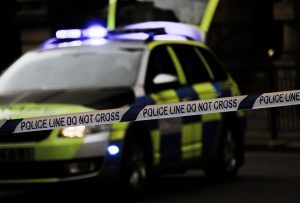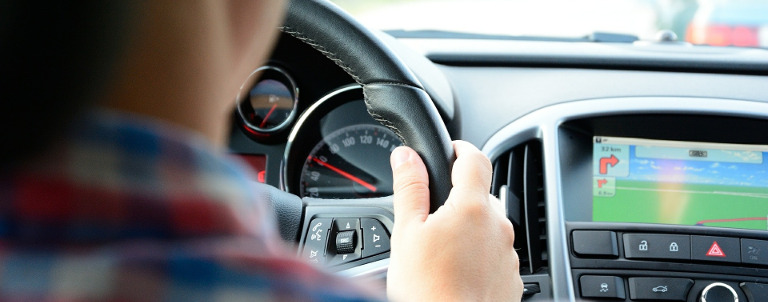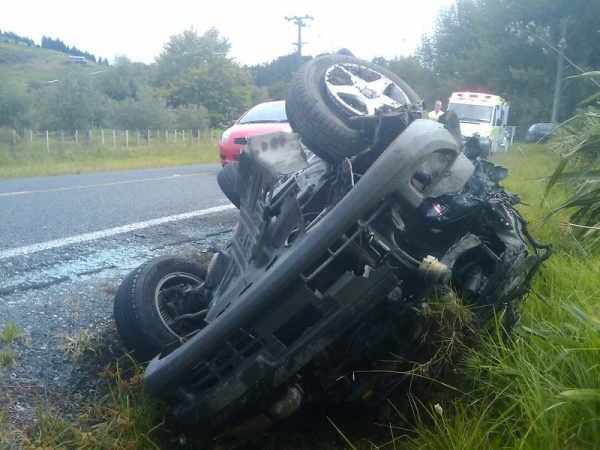May 12, 2017
Motorist charity RoadPeace suggests that the 28% decrease in traffic police over the last few years means that Britain’s unmonitored lesser roads are becoming increasingly lawless places to drive.
With budget cuts affecting the number of officers that local authorities can assign to the roads, we are seeing physical units less and less often. Instead, local authorities are opting for automated systems and camera surveillance, such as automatic number plate recognition (ANPR) and the new “smart motorways.”
The result of this is that crime is captured (and thus decreasing) on heavily monitored roads. However, crime on unmonitored roads is spiking. Crash for cash scams, hit and run incidents, speeding and mobile phone misuse are all growing.

The statistics show that the number of officers on UK roads fell by 28% from 2010-2015. This is interesting when you consider that the number of people seriously injured and killed dropped by 16% between 2005 and 2009, but only 1% over the 2010-2015 period. It seems to show a direct correlation between there being fewer officers on the roads and more deaths and injuries.
Shift in focus
RoadPeace also believes there has been a recent shift in focus from local authorities. Convictions from driving related offences are falling, while the uptake of driver awareness courses is rising. Stats released in April 2017 show a 23% drop in prosecutions of drivers who caused fatal road crashes in England and Wales from 2010-2015. Does this mean that more people are getting away with motoring offences?
The charity does not believe driving awareness courses act as an effective deterrent. A spokesperson for RoadPeace recently bemoaned the fact the police “don’t impose penalty points,” even though the system of points itself offers “the greatest deterrence effect.”
The National Police Chiefs Council maintains road policing methods have improved. However, it also states that it is working with the Department of Transport to assess how successful speed awareness courses are, including their impact on driver behaviour.
It seems that Britain’s roads are becoming two-tiered. Major arterial roads and traffic hotspots are heavily monitored, with drivers penalised for falling out of line with speed or congestion restrictions. Meanwhile, unmonitored minor road systems are becoming increasingly lawless and more dangerous places to drive. This would perhaps explain the tenfold year on year increase in dashcam sales across the UK, as drivers look to protect themselves with video evidence against the threats of the country’s roads.
What’s your opinion on Britain’s roads? Do you think we are seeing a split between heavily monitored versus increasingly lawless roads? Do you think this could negatively impact how safe drivers are on the roads? Leave a comment to let us know your view.
Jun 14, 2017
A recent survey by black cab taxi app mytaxi has found that London drivers are more reliant on sat navs than drivers anywhere else in the UK. The survey estimates that London drivers waste on average 62 hours a year blindly following sat nav instructions into traffic jams and black-spots, with these “zombie drivers” further exacerbating traffic congestion on the roads.
The mytaxi survey found that a massive 88% of drivers in London use sat navs all the time, versus 76% for the national average. Further to this, one in five Londoners say they cannot find their way home in London without a sat nav. Meanwhile, a whopping 65% confess they would not be able to cope without a sat nav in an unfamiliar location outside of London.

Ignoring road conditions
Most worryingly of all, 62% say that they pay no regard at all to road signs, famous landmarks or even temporary lights and road signs, such as diversion signals if a road is closed, when following the sat nav in the car. This zombification has led to drivers blindly driving into dead ends, going the long way if re-routed by the sat nav or getting stuck in unnecessary traffic congestion because a sat nav fails to choose the quickest route, wasting up to 100 hours a year per driver.
The survey also found that 39% of all sat nav routes fail to reach the exact destination, while only 13% of the routes selected by sat navs were the quickest to the destination. In a sly dig at Uber drivers and other sat nav-reliant minicab services, mytaxi General Manager, UK, Andy Jones, comments:
“Sat nav technology is undoubtedly a huge help to many people but it is certainly not flawless and the results can be both frustrating and comical, as evidenced by the huge number of misadventures we have recorded.”
“We are proud to say that all mytaxi drivers have spent three years studying for The Knowledge memorising over 25,000 streets and 20,000 landmarks. There really is no substitute to real local knowledge when it comes to navigating through traffic and finding the quickest routes to a destination.”
How to tackle being a “zombie driver”
The obvious way to tackle being a zombie driver is to switch the sat nav off and try to navigate using road signs and maps, especially on common routes that you undertake. There is no substitute for knowing the back routes personally, as this can enable you get around the jams at peak times.
Some drivers have sat nav on by default because they think it will find a faster route if there is traffic congestion on the current route. However, although sat navs such as Google Maps often proclaim there is a “faster route available,” this is not always correct. That’s because these sat navs don’t analyse the current congestion level on the alternative route at the same time – at best they predict it based on historic traffic levels at that day and time, so it’s not a true, real time comparison between routes.
Another way to tackle your zombie driver status is to use an app like Waze. Waze is a community of drivers who aim to help other drivers to avoid traffic jams in real time. Much of the data you see in Waze does appear in Google Maps, but you can’t replace the feeling of Waze and the sense of finding a new route for the community of other drivers out there.
Are you a “zombie driver” and do you agree that sat navs take you into traffic jams rather than help you avoid them? Do you think you are over reliant on your sat nav – would you be able to cope with road signs and maps? Let us know in the comments below.
Image Credit – Pixabay
Jun 7, 2017
As part of Operation Snap from October 2016 onwards, North Wales Police has been accepting dash cam, helmet cam and mobile phone footage from the public. Of the 100 clips submitted, 80 have led to driving convictions, in some cases leading to prison time for some drivers caught out by this new approach.
It comes at a time when there are 27% fewer traffic police on Britain’s roads than 2010, according to Home Office data. With the UK’s roads becoming increasingly lawless places to drive and with fewer police on the roads due to government cuts, the installation of a dash cam is a great way to protect a driver from false accident claims, with some insurers also offering 20% discounts on policies if you have a dash cam installed.
Dash cams as a video witness
But it seems that an interesting by product of dash cams is that they can also act as additional eyes and ears on the roads for the police, Operation Snap has proved such a success that other police forces across the country are looking at rolling out something similar in their own regions.
In a recent article from Auto Express, North Wales Police figured out that it took 15 hours of police time per incident to process and prosecute for each driving offence if a traffic police office caught someone in person. As camera footage is now being treated as an eye witness account of a driving offence, the amount of time to deliver a process and prosecute a penalty has tumbled to less than an hour.
The process of uploading the clips takes minutes and is very easy. Public generated video footage for driving offences is now accepted in court as evidence and covers a range of areas such as driving without due care and attention, dangerous driving, using a mobile phone at the wheel, improper control of vehicle and running red lights or contravening other traffic systems, such red line zones and bus lanes.
“The operation will enable our communities to help us assist in a key policing priority, to continue to keep the roads of South Wales safe. Our officers will still be policing the roads in our force area 24 hours a day, 7 days a week but we know that members of the public are keen to help, and I am pleased that with the support of Go Safe, we can provide an easier way to submit footage and images either whilst travelling as a passenger, or using the footage of dash cams that can submitted later when the driver has finished their journey.”
Jeremy Vaughan, Assistant Chief Constable of South Wales Police
Is this the future of traffic policing?
Only 2 penalties from 80 issued have been appealed thus far, as the power of video evidence is almost impossible to deny. Capturing offenders is a good thing and will perhaps make some drivers think twice about offending knowing a dash cam might be recording even if the police are not there.
However, using video footage as evidence of traffic offences is fine to an extent but it fails to hide what seems to be a bigger concern, that is a large decline in traffic police due to Government austerity measures. We told you in an article 2 months ago about how we think that Britain’s roads are becoming more binary. On the major arterial routes, they are becoming heavily monitored with cameras and ANPR every mile using “smart motorways” and then the clear majority is becoming more lawless and dangerous places to drive than ever before.
As the police pull away from the front line, is the concept of “crowd-sourced police intelligence” using dash cams the future of policing? Are dash cams going to be made compulsory for all drivers and would it be a law that all drivers must allow police access to that video evidence or face prosecution themselves? It sounds like something out of a sci fi novel but the way it’s going it could be a reality within 10 years.
Do you think this is a great way to support the Police on Britain’s roads or a sad indictment of the current state of the Police caused by years of Government cuts? Let us know in the comments below.
Image Credit – Pixabay


